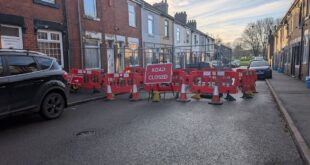By Ollie Cooper, Money team
Interest in a phenomenon known as “dark tourism” has been steadily rising in recent years – but what is it?
To find out, we’ve spoken with tourism academic Dr Hayley Stainton and renowned dark tourist and author Dr Peter Hohenhaus, who runs a dark tourism website.
What is it?
In general, dark tourism involves travelling to sites connected to death or disaster.
“Dark tourism has been around for as long as we have been travelling to places associated with death,” Dr Stainton says.
However, the term wasn’t officially coined until 1996 by John Lennon, a professor of tourism at Glasgow Caledonian University, in Scotland.
“Not everyone is familiar with the term,” says Dr Stainton, “[but] many people have been a dark tourist at some time or another, whether intentional or not.”
Some examples of the most famous sites
- Auschwitz concentration camp, Poland
- 9/11 Memorial and Museum in New York, US
- Chernobyl, Ukraine
- Hiroshima and Nagasaki, Japan
- Choeung Ek “killing fields” and the Tuol Sleng genocide museum at the former S-21 prison in Phnom Penh, Cambodia
Areas with a degree of infamy, like Alcatraz, are extremely popular spots that also fall under the “dark tourism” umbrella.
How popular is it?
Dr Hohenhaus and Dr Stainton say they have noticed a rise in its popularity.
“Tourists are looking for more unique and unusual experiences,” Dr Stainton says.
“This has seen a move away from the more traditional ‘sun, sea and sand’ type holidays to a variety of different tourism forms, which includes dark tourism.”
Dr Hohenhaus adds: “Maybe people want to connect to more recent and hence more personally relevant history – that is definitely the case with myself.”
He goes on: “I think I’ve learned more about the world through dark tourism than through all of my formal education or my previous academic career.”
Is it ethical?
This is the big question associated with dark tourism.
Dr Stainton says that while problems do arise, the stigma around the practice is often misguided.
“People don’t visit sites like the killing fields in Cambodia or the site of Chernobyl for ‘fun’ – they visit for the educational experience, as dark tourism is often also a form of educational tourism,” she says.
Problems arise when tourists are not respectful to those who may have been impacted.
“For instance, taking inappropriate photos or laughing and joking when others may be in a state of mourning.”
Notorious examples include people taking selfies outside Grenfell Tower and at Auschwitz.
“It is therefore imperative that dark tourists are considerate of those around them and respectful at all times,” Dr Stainton says.
“As long as you are not just after a cheap sensationalist thrill – take dark tourism seriously and do it right, and it can be an immensely enriching thing to engage in.”
Dr Hohenhaus
Where could you go?
These are Dr Hohenhaus’ recommendations:
- Ijen crater in Indonesia – where at night you can see the fabled blue flames of the sulphur mines next to the volcano crater lake;
- The Polygon, the former Semipalatinsk nuclear weapons test site of the USSR, now in Kazakhstan;
- The Goli Otok former prison island off the coast of Croatia;
- The Murambi memorial to the Rwandan genocide – which Dr Hohenhaus says is “certainly the very darkest place I have ever been”;
- Majdanek concentration camp memorial near Lublin, eastern Poland.
What do you think of dark tourism? Is it misunderstood, educational or abhorrent? Let us know in the comments section…
Source link



